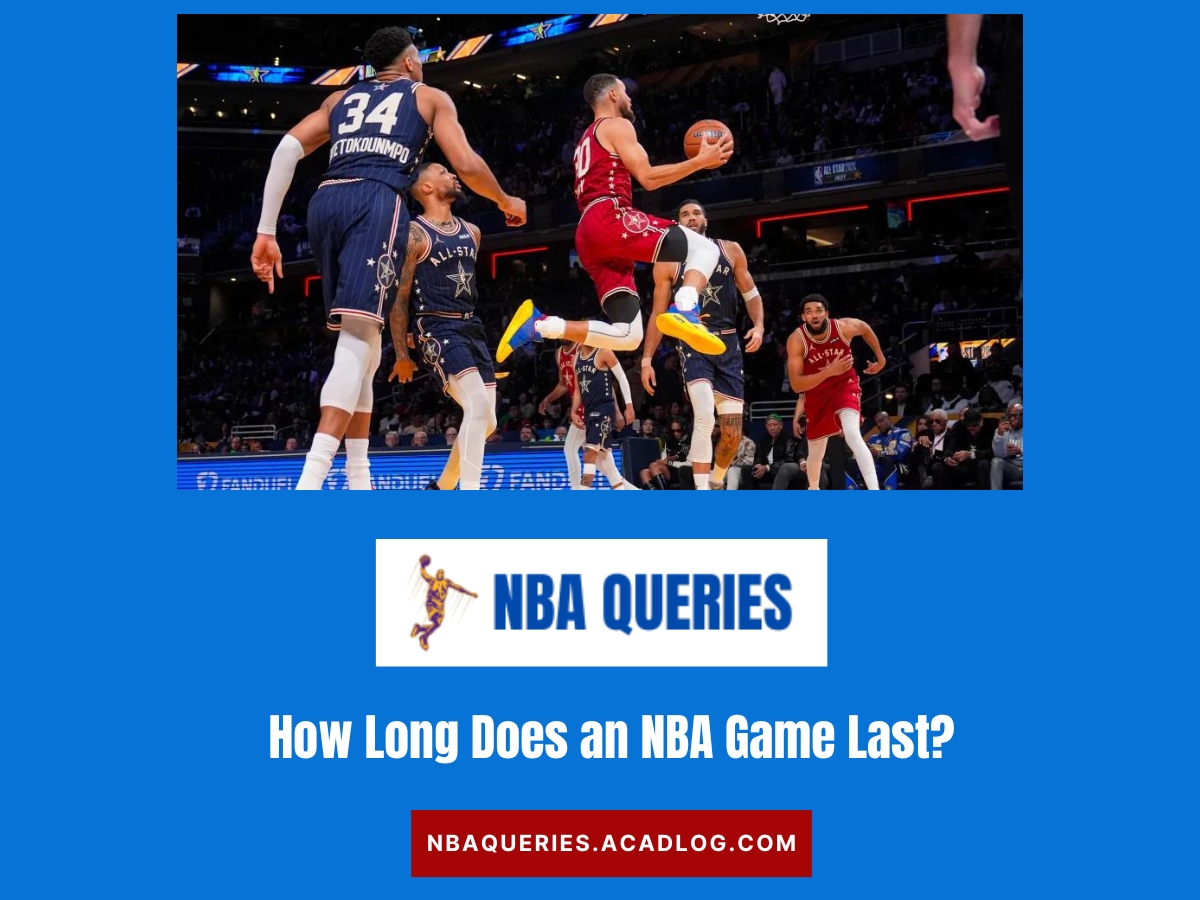Understanding the duration of an NBA game is essential for fans and newcomers alike, offering insight into the dynamics and excitement of one of the world’s most thrilling sports. This guide breaks down the various elements that contribute to the overall length of NBA games, providing a detailed analysis based on the latest data and trends.
Official Game Time vs. Real-Time Duration
At its core, an NBA game is structured into four quarters, each lasting 12 minutes. Despite this seemingly straightforward 48-minute playtime, the real-time length of an NBA game extends much further due to various factors including timeouts, fouls, and commercial breaks.
Key Factors Influencing Game Length
- Game Structure: NBA games are divided into four 12-minute quarters, totaling 48 minutes of game time. However, this is just the tip of the iceberg when considering the actual duration of a game.
- Timeouts: Each team is allowed seven timeouts, each lasting 1 minute and 15 seconds, adding significant time to the game. Teams often use all their timeouts, especially in close games, for strategic planning and recovery.
- Halftime and Breaks: Halftime in the NBA lasts 15 minutes, but the total game length also includes quarter breaks and the potential for overtime periods, which last 5 minutes each.
- Commercial Breaks: Commercial breaks significantly extend the length of NBA games, especially during nationally televised games and playoffs, where ad slots are more lucrative.
- Fouls and Free Throws: Fouls lead to stoppages for free throws and possession changes, adding to the total game time.
- Replays and Reviews: The use of replays for reviewing calls by referees adds additional time, especially in games with contentious or critical plays.
- Injuries: While unfortunate, injuries can lead to pauses in the game as medical staff attend to players, further extending the duration.
Average Game Duration
- Regular Season: On average, NBA games last between 2 to 2.5 hours, with variations depending on the factors mentioned above.
- Playoffs and Finals: The intensity and stakes of playoff games often lead to longer durations, averaging closer to 3 hours.
Impact of Game Closeness and Televised Broadcasts
- Close Games: Games with a narrow final score margin tend to be longer due to strategic timeouts and fouls in the closing moments.
- Nationally Televised Games: These games are on average 5 minutes longer than locally broadcast matches, primarily due to extended commercial breaks.
Historical Context and Exceptional Durations
The longest NBA game in history took place in 1951, lasting six overtime periods. While this is an outlier, it underscores how varied game lengths can be.
Advanced Factors Affecting NBA Game Length
Overtime Dynamics
Overtime periods add a significant extension to NBA games, with each OT lasting 5 minutes. However, the frequency of overtime games and the possibility of multiple OTs introduce a variable element to game length. For instance, games with one overtime period average around 2 hours and 35 minutes.
The Role of Strategy in Game Duration
- Intentional Fouling: A common strategy in close games, intentional fouling can significantly extend the last minutes of game time as teams attempt to regain possession.
- Timeout Management: How teams use their timeouts, especially in the fourth quarter and overtime, can greatly influence the final duration of the game.
Influence of Game Pace and Style
- Fast-Paced vs. Slow-Paced Games: The style of play can impact game length, with fast-paced games potentially having fewer stoppages and slower-paced games featuring more strategic play and timeouts.
- Playoff Intensity: The tactical nature of playoff games often results in more stoppages, whether for strategic timeouts, fouls, or reviews, thus extending game duration beyond the regular season average.
Technological and Rule Changes
Recent seasons have seen technological advancements and rule changes aimed at improving the flow of the game and reducing unnecessary delays. For example, the NBA has implemented rules to streamline the review process and limit the duration of certain stoppages. Yet, these changes have a nuanced impact on game length, with the essential structure of the game remaining the predominant factor.
Viewing Experience and Broadcast Dynamics
- Commercial Breaks: The length and number of commercial breaks, especially in nationally televised games, have a notable impact on the viewing experience, extending the total duration of the broadcast.
- Halftime Shows and Presentations: Special events and presentations during halftime can add to the game day experience, both for attendees and viewers, further extending the time commitment for fans.
The Global Perspective: Comparing NBA with Other Leagues
Comparing the NBA game length to other basketball leagues around the world offers a broader context:
- FIBA and International Play: Games under FIBA rules, including the Olympics and World Cup, feature four 10-minute quarters, with a total game duration averaging closer to 2 hours when including stoppages and breaks.
- WNBA and College Basketball: These games also differ in structure and duration, with the WNBA featuring similar quarter lengths to the NBA but with slightly different pacing and commercial break patterns. College basketball games, played in two halves, offer a distinct format and flow, impacting overall game length.
The Longest Games in History
Highlighting the longest NBA game provides a glimpse into the potential extremes of game duration. The record-setting game between the Indianapolis Olympians and the Rochester Royals in 1951, which lasted six overtimes, underscores the unpredictability and enduring appeal of basketball.
Final Thoughts
While the basic structure of NBA games provides a framework for understanding game duration, a multitude of factors contribute to the actual length of a game. From strategic decisions and game dynamics to technological advancements and broadcast requirements, each element plays a role in shaping the NBA experience. As the league continues to change, so too will the factors influencing game length, maintaining the balance between competitive strategy and viewer engagement.

